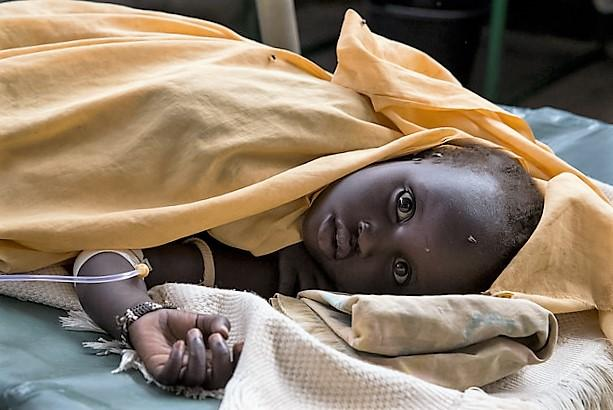The New York State Department of Agriculture and Markets on March 28 warned consumers about the risk of H5N1 avian flu from Savage Cat Raw Chicken Cat Food, which the California-based company recalled earlier this month following an investigation into cats that contracted H5N1 infections after eating the food.
.jpg)
Samples of the cat food from one lot were collected by the New York City Department of Health and tested by Cornell University and were positive. The findings were confirmed by the US Department of Agriculture (USDA) National Veterinary Services Laboratory.
“Illnesses in cats that have consumed this product have been reported in other states and in New York City,” health officials said. An earlier report said the products were distributed in California, Colorado, New York, Pennsylvania, and Washington.
Over the past few months, sporadic H5N1 deaths and illnesses in cats have been linked to other raw pet food brands, as well.
More detections in dairy cattle and poultry
In other developments, the USDA’s Animal and Plant Health Inspection Service (APHIS) confirmed one more H5N1 detection in dairy cattle, another from Idaho, raising the national total to 995 across 17 states since March 2024.
Also, APHIS confirmed two more detections in poultry, one at a farm in Pennsylvania’s Lancaster County, and the other a live bird market in New York’s Queens County.

Contracting a non-COVID lower respiratory tract infection (LRTI) raises your risk of death two to seven times over the next month to a year, according to a study last week in Open Forum Infectious Diseases.
For the study, researchers with the health consulting firm Avalere and drug company Pfizer retrospectively analyzed de-identified US adult patient data from Optum’s Clinformatics Data Mart Database from 2013 through 2018. The research team considered all LRTI illnesses—caused by influenza, respiratory syncytial virus (RSV), or other bacteria, viruses, or other pathogens—occurring within 60 days of each other as part of the same episode.
Risk of death 6 times higher after 1 year in outpatients
They found that, among about 60,200 patients hospitalized for LRTI, 30-day mortality risk was 5.8% and 360-day risk was 18.3%, which were 7.5 and 2.6 times higher than outcomes for comparison patients. Among roughly 2.4 million ambulatory patients, 30-day risk of death was 1.2% and 360-day risk was 3.6%, which was 6.5 and 2.1 times higher than comparison patients.
“Among both LRTI-hospitalized and LRTI-ambulatory patients, mortality risk increased with increasing age and was higher for adults with chronic or immunocompromising conditions (vs. without medical conditions),” the study authors write. They add that their findings are comparable to the limited data available from previously published studies.
Implementing strategies to prevent LRTI in adults of all ages has the potential to yield important public health and patient benefits.
The authors conclude, “The findings from this study indicate that LRTI patients, both hospitalized and ambulatory, have elevated mortality risks compared to matched comparison patients, in the short-term and long-term, especially those of older ages and with worse comorbidity profiles (irrespective of age). Implementing strategies to prevent LRTI in adults of all ages has the potential to yield important public health and patient benefits.”

A cholera outbreak in Angola has spread to 16 of the country’s 21 provinces since the first of the year, the World Health Organization (WHO) said in an outbreak notice late last week.
As of March 25, officials have recorded 8,543 cholera cases and 329 deaths (case-fatality rate [CFR], 3.9%), with one third of deaths occurring in the community and outside of medical treatment centers. The CFR for hospitalized cases is 2.5%, with 253 patients currently hospitalized. Luanda (48.5%) and Bengo (29.1%) provinces have the highest burden of disease.
“The outbreak initially saw a rapid increase in cases, exceeding 1,000 weekly cases in early February. This was followed by a decline and a plateau, with case numbers stabilizing at approximately 800 cases per week for a month,” the WHO said. Last week, however, cases surged again, reaching 1,200—the highest weekly count to date.
Children, young adults hit hard
Children ages 6 to 14 years represent 23.1% of the total cases, and 21.7% of cases are in teens and young adults aged 15 to 24 years.
Angola has historically battled cholera outbreaks that typically follow rainy seasons. Neighboring Democratic Republic of the Congo and Zambia are also experiencing cholera outbreaks.
Inadequate access to clean water and sanitation continues to leave Angola highly vulnerable to cholera outbreaks.
“Inadequate access to clean water and sanitation continues to leave Angola highly vulnerable to cholera outbreaks, especially in densely populated urban centers and remote rural communities,” the WHO said. “Given the ongoing outbreak, the rainy season, and Angola’s proximity to cholera-affected countries, the risk of further spread within Angola and to neighboring countries is considered very high.”













